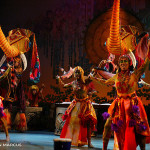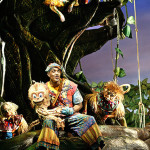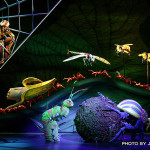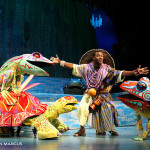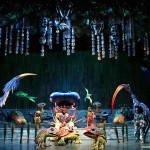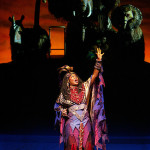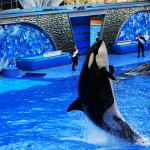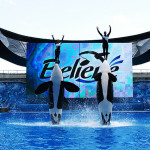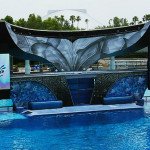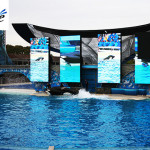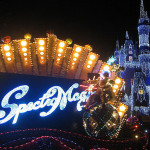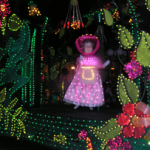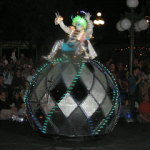KATONGA – Busch Gardens Tampa
KaTonga takes guests on a journey to the heart of Africa in a 35-minute musical celebration of animal folklore. The show follows a day in the lives of aspiring storytellers, called Griots, as they strive to become masters of their craft. To accomplish this rite of passage, the performers evoke traditional African stories to mesmerize and entertain the audience. Masterful puppet design, magical folklore, energetic original music and spectacular African-inspired dance combine to create the first theme park show of Broadway-production caliber.
“KaTonga is the only one-act original musical commissioned by a corporation for the theme park environment“, said producer Don Frantz. “As impressive, Busch Gardens’ Moroccan Palace Theatre is the only legitimate full scale Broadway-style theatre in a theme park on the entire East Coast.“
A cast of eighteen including the Griots, puppeteers, dancers and acrobats combine amazing talents to bring the show to life. In addition to featuring elaborate and whimsical costumes, the production uses larger-than-life animal puppets to create imagery sure to awe viewers. The show closes with musicians, singers and drummers surrounding the audience for a giant finale.
KATONGA received an international reward honoring its excellence in live theatrical production by IAAPA (International Association of Amusement Parks and Attractions – the 2004 Big ‘E’ Award).
BELIEVE – SeaWorld Adventures Parks
After years in the making, BELIEVE, which opened at the parks during the spring of 2006, is the most ambitious killer whale show in the parks’ 42 year history. This all-new production blends new killer whale behaviors with elaborate set pieces, music, choreographer an state-of-the-art multimedia. The three Shamu Stadiums have a completely new look for the first time in 15 years.
The centerpiece of the BELIEVE set is the world’s largest whale tail, three stories tall, overlaid with images of Shamu. The tail, or fluke, serves as the backdrop and is set off by four 10’x20′ LED moving screens. The create the screen movers, a 12′ high bridge was added that spans the width of the stadium. To create ‘spotlights’ that can be seen during the day in the open air theaters, producers and set designers incorporated water fountains as visual cues to guests to highlight the whales’ behaviors. The traditional ‘slideovers’ that the killer whales use to enter and exit the main pool during shows are enhanced with waterfalls providing a more dramatic entrance to the show.
Enhanced video equipment provides a higher definition view of Shamu’s world than ever before. Four 200-square-foot video screens create a unique visual presentation, and can move independently or simultaneously on a bridge suspended above Shamu’s pool. The screens can move horizontally as well as turn and tilt in any direction. When brought together vertically, the four pieces create a screen 20’x40′; when brought together horizontally they combine to create a panoramic center stage video presentation 10’x 80′.
Multiple video cameras supply images to the screens. Cameras suspended above Shamu’s pool capture images never before seen in Shamu Stadiums—whales and trainers shooting from the water straight toward the camera. Sophisticated underwater cameras capture images of Shamu’s world in stunning clarity, and two manned, above-water cameras make each show unique.
All three SeaWorld parks installed upgraded sound systems to heighten guests’ experience. The music benefits from improved sound quality with higher frequency levels and dynamics. The enhanced audio systems are the most sophisticated ever constructed for a Busch Entertainment show.
Christopher Ward’s original score was written for BELIEVE. Ward is best known for his work with Broadway and film composer Hans Zimmer. Incorporated into the original score are two lyrical pieces including the signature song, BELIEVE, written by composer John Stothers.
The story line and choreography of BELIEVE reflect the close relationship SeaWorld trainers have with the killer whales in their care. During the show’s development, whale trainers from the three SeaWorld parks were brought together to brainstorm. During that meeting dozens of new behaviors, never before seen in any SeaWorld show, were identified and then taught to the killer whales at all three SeaWorld parks. The show highlights 100 separate behaviors. For nine months, whales and trainers rehearsed and practiced; some of the behaviors require multiple trainers and multiple whales to synchronize their actions. The three SeaWorld parks regularly share video of successful training sessions. The music for BELIEVE was being composed in a new way—straight through. The whales and trainers act in synchronization with music composed just for.
SPECTRO MAGIC – Walt Disney World
SpectroMagic! In celebration of the 20th anniversary of Walt Disney World we were given the challenge to create a new night-time parade for the Magic Kingdom – not only new but a parade great enough to replace the iconic Main Street Electrical Parade. 1991 was the perfect year to attempt such a tall order. The original light parade was created in 1972 with mini-lights which just became popular for Christmas trees. But in 1991 there was an explosion of fibre-optics in dozens of varieties, electric luminescent panels, Light emitting diodes (LED’s), low-grade lazers, plasma balls – the options for illumination were speeding us toward the 21st century. The technology was also advancing behind the light bulb. Batteries needed on the moving floats were more efficient, giving us more juice. Most importantly advances in electrical dimmers allowed us to program the lights in sync with the musical swells, most dramatically when the final multi-colored cavalcade transformed to a brilliant white.
Ken Dresser, who designed the original Electrical Parade, stepped into the light once more as our master visual imagineer. Bick Tilly choreographed. John Debney composed the score. I was fortunate to direct what looked to be 1,000,003 lights.

